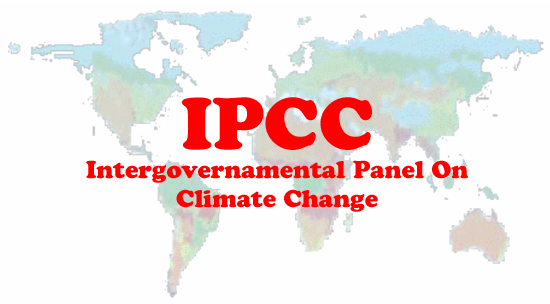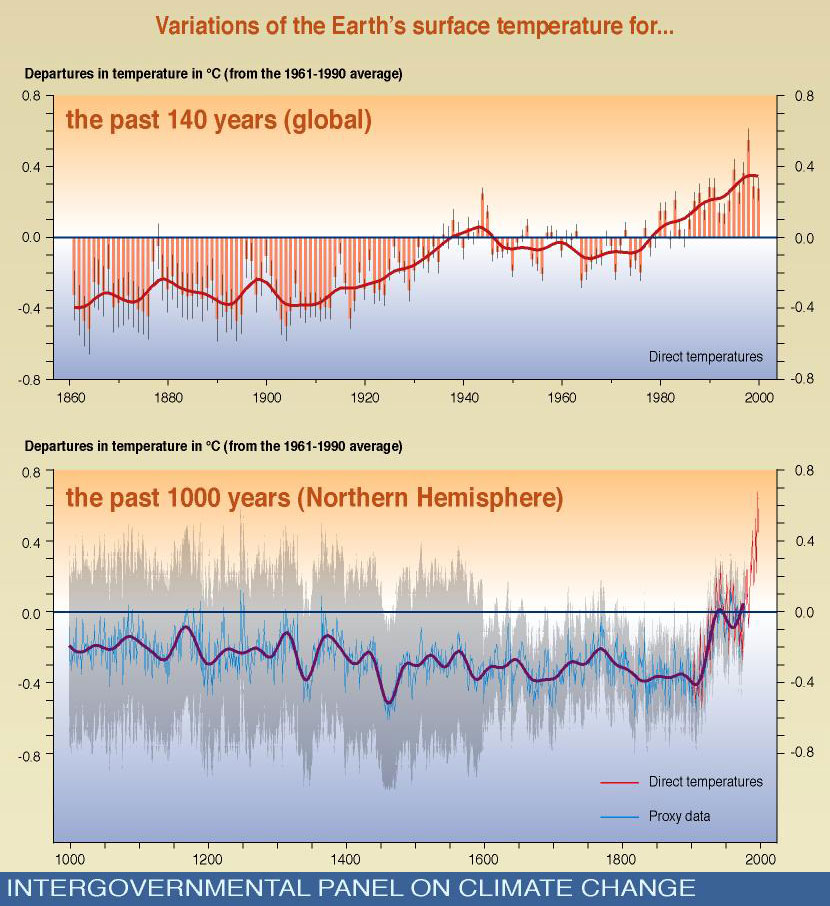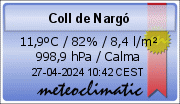" METEOROLOGÍA: EL I.P.C.C. DIVULGA SU INFORME"

Hola a todos.
El Panel Intergubernamental para el Cambio Climático ha emitido su último informe en fecha 27 de setiembre.
Como era de preveer se atribuyen las causas del calentamiento global a motivos antrópicos, o sea que nosotros-entre todos- estamos influyendo negativa y determinantemente en el cataclismo que según muchos nos queda a menos de cien años vista.
Reproduzco el comunicado de prensa :
Distribute
IPCC Secretariat
c/o WMO · 7 bis, Avenue de la Paix · C.P: 2300 · CH-1211 Geneva 2 · Switzerland
telephone +41 22 730 8208 / 54 / 84 · fax +41 22 730 8025 / 13 · email IPCC-Sec@wmo.int · www.ipcc.ch
2013/20/PR
IPCC PRESS RELEASE
27 September 2013
Human influence on climate clear, IPCC report says
STOCKHOLM, 27 September - Human influence on the climate system is clear. This is evident
in most regions of the globe, a new assessment by the Intergovernmental Panel on Climate
Change (IPCC) concludes.
It is extremely likely that human influence has been the dominant cause of the observed warming
since the mid-20th century. The evidence for this has grown, thanks to more and better
observations, an improved understanding of the climate system response and improved climate
models.
Warming in the climate system is unequivocal and since 1950 many changes have been
observed throughout the climate system that are unprecedented over decades to millennia. Each of
the last three decades has been successively warmer at the Earth’s surface than any preceding
decade since 1850, reports the Summary for Policymakers of the IPCC Working Group I
assessment report, Climate Change 2013: the Physical Science Basis, approved on Friday by
member governments of the IPCC in Stockholm, Sweden.
“Observations of changes in the climate system are based on multiple lines of independent
evidence. Our assessment of the science finds that the atmosphere and ocean have warmed, the
amount of snow and ice has diminished, the global mean sea level has risen and the concentrations
of greenhouse gases have increased,” said Qin Dahe, Co-Chair of IPCC Working Group I.
Thomas Stocker, the other Co-Chair of Working Group I said: "Continued emissions of greenhouse
gases will cause further warming and changes in all components of the climate system. Limiting
climate change will require substantial and sustained reductions of greenhouse gas emissions."
“Global surface temperature change for the end of the 21st century is projected to be likely to
exceed 1.5°C relative to 1850 to 1900 in all but the lowest scenario considered, and likely to exceed
2°C for the two high scenarios,” said Co-Chair Thomas Stocker. “Heat waves are very likely to occur
more frequently and last longer. As the Earth warms, we expect to see currently wet regions
receiving more rainfall, and dry regions receiving less, although there will be exceptions,” he added.
Projections of climate change are based on a new set of four scenarios of future greenhouse gas
concentrations and aerosols, spanning a wide range of possible futures. The Working Group I report
assessed global and regional-scale climate change for the early, mid-, and later 21st century.
“As the ocean warms, and glaciers and ice sheets reduce, global mean sea level will continue to
rise, but at a faster rate than we have experienced over the past 40 years,” said Co-Chair Qin Dahe.
The report finds with high confidence that ocean warming dominates the increase in energy stored
in the climate system, accounting for more than 90% of the energy accumulated between 1971 and
2010.
- 2 -
Co-Chair Thomas Stocker concluded: “As a result of our past, present and expected future
emissions of CO2, we are committed to climate change, and effects will persist for many centuries
even if emissions of CO2 stop.”
Rajendra Pachauri, Chair of the IPCC, said: “This Working Group I Summary for Policymakers
provides important insights into the scientific basis of climate change. It provides a firm foundation
for considerations of the impacts of climate change on human and natural systems and ways to
meet the challenge of climate change.” These are among the aspects assessed in the contributions
of Working Group II and Working Group III to be released in March and April 2014. The IPCC Fifth
Assessment Report cycle concludes with the publication of its Synthesis Report in October 2014.
“I would like to thank the Co-Chairs of Working Group I and the hundreds of scientists and experts
who served as authors and review editors for producing a comprehensive and scientifically robust
summary. I also express my thanks to the more than one thousand expert reviewers worldwide for
contributing their expertise in preparation of this assessment,” said IPCC Chair Pachauri.
The Summary for Policymakers of the Working Group I contribution to the IPCC Fifth Assessment
Report (WGI AR5) is available at www.climatechange2013.org or www.ipcc.ch.
Key Findings
See separate Fact Sheet of Headline Statements from the WGI AR5 Summary for Policymakers,
available at www.climatechange2013.org.
Background
Working Group I is co-chaired by Qin Dahe of the China Meteorological Administration, Beijing,
China, and Thomas Stocker of the University of Bern, Switzerland. The Technical Support Unit of
Working Group I is hosted by the University of Bern and funded by the Government of Switzerland.
At the 28th Session of the IPCC held in April 2008, the members of the IPCC decided to prepare a
Fifth Assessment Report (AR5). A Scoping Meeting was convened in July 2009 to develop the
scope and outline of the AR5. The resulting outlines for the three Working Group contributions to the
AR5 were approved at the 31st Session of the IPCC in October 2009.
The Summary for Policymakers of the IPCC WGI AR5 was approved at the Twelfth Session of IPCC
Working Group I meeting in Stockholm, Sweden, 23 to 26 September 2013 and was released on 27
September.
The Final Draft of the Working Group I report (version distributed to governments on 7 June 2013),
including the Technical Summary, 14 chapters and an Atlas of Global and Regional Climate
Projections, will be released online in unedited form on Monday 30 September. Following copyediting,
layout, final checks for errors, and adjustments for changes in the Summary for
Policymakers, the full report of Working Group I will be published online in January 2014 and in
book form by Cambridge University Press a few months later.
The Working Group I assessment comprises some 2,500 pages of text and draws on millions of
observations and over 2 million gigabytes of numerical data from climate model simulations. Over
9,200 scientific publications are cited, more than three quarters of which have been published since
the last IPCC assessment in 2007.
In this IPCC assessment report, specific terms are used to indicate the assessed likelihood of an
outcome or a result. For those terms used above: virtually certain means 99–100% probability,
extremely likely: 95–100%, very likely: 90–100%, likely: 66–100%. For more information see the
- 3 -
IPCC uncertainty guidance note: https://www.ipcc-wg1.unibe.ch/guidancepaper/ar5_uncertaintyguidance-

http://rainforests.mongabay.com
note.pdf
For more information, contact:
IPCC Press Office, Email: ipcc-media@wmo.int
Jonathan Lynn, + 41 22 730 8066 or Werani Zabula, + 41 22 730 8120
IPCC Working Group I Media Contact, Email: media@ipcc.unibe.ch
Pauline Midgley, +41 31 631 5620
Follow IPCC on Facebook and Twitter
Queda claro el contenido de la nota de prensa y persiste en la influencia del CO2 y de los demás gases de efecto invernadero. Los cambios no sólo afectarían a un aumento de las temperaturas de hasta 4ºC de media para el año 2.100 sino que también se verían afectados los régimenes de precipitación con sequías e inundaciones en progresivo aumento.
Los medios técnicos y humanos dedicados al estudio del Clima parecen reforzar la verosimilitud de lo anunciado, si bien yo personalmente lo leo con un pequeño espacio dedicado a una mezcla de esperanza con una pizca de incertidumbre.
Lo seguiremos más adelante en este principio de otoño que curiosamente aún conserva de forma muy excepcional algunos ventisqueros con nieve del pasado invierno-primavera.
Saludos.
Mariscal Tro


